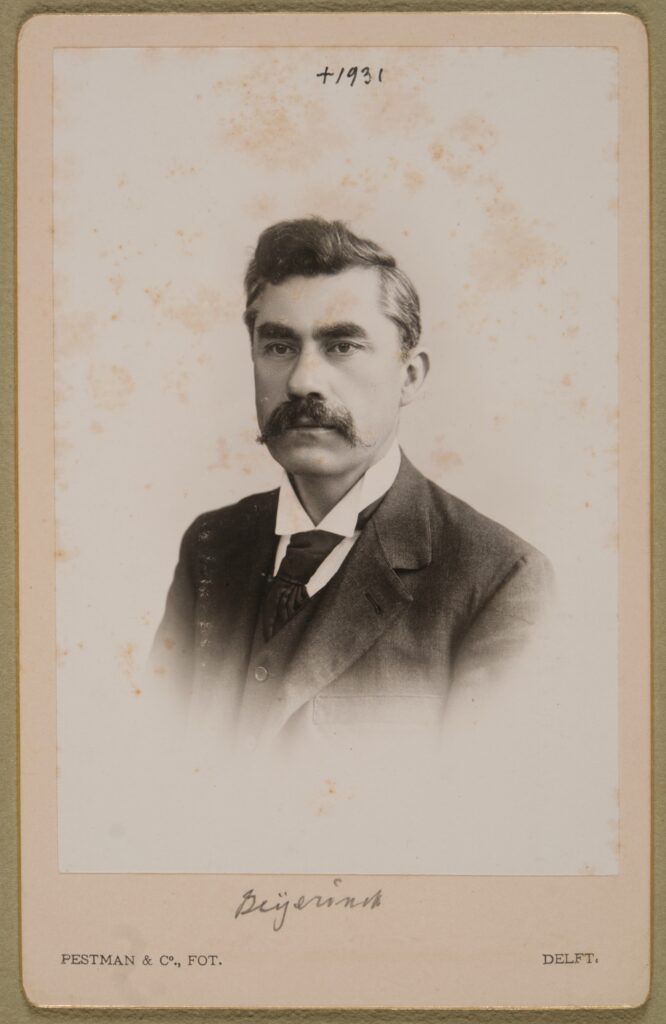1886-1898 | Beijerinck: contagion vivum fluidum
In 1886, Beijerinck, a former colleague of Mayer in Wageningen, by then based in Delft, was asked by Mayer to look into the tobacco mosaic disease.
Beijerinck filtered mosaic virus-infected liquid pulp of the leaves using a porcelain filter, called the Pasteur-Chamberland filter. This device filtered out any bacteria that might be present.
He then used the filtrate to infect healthy leaves. He repeated this procedure several times. If the disease had been caused by a chemical, the effect would have become weaker with each repetition, but instead it got stronger. Beijerinck also discovered that when the filtrate was heated to 90°C, it no longer had any effect.
Beijerinck’s conclusion was that tobacco mosaic disease was caused by a living organism, because it multiplied, and died at higher temperatures. However, the mysterious pathogen was too small to be detected even under the strongest microscopes that existed at those times, nor could it be grown like bacteria in a laboratory. Beijerinck concluded that this was an unknown life form, which he called ‘contagion vivum fluidum’, or virus. For this reason, Beijerinck is known as the founder of virology.
The current definition of a virus
Nowadays, a virus is described as very small particles composed of genetic material (RNA or DNA). This genetic material is covered in a protective protein shell and sometimes a lipid membrane. Virus particles can only replicate in the cells of a suitable host, making viruses a kind of parasite.
